Motion Blur Layer
m |
m (→Samples) |
||
| Line 45: | Line 45: | ||
== Samples == | == Samples == | ||
| + | {| class="wikitable" style="text-align:center;" | ||
| + | ! scope="col" | | ||
| + | ! scope="col" | From Subsample Start 0 to Subsample End 1 | ||
| + | ! scope="col" | From Subsample Start 1 to Subsample End 0 | ||
| + | |- | ||
| + | !| 0f–0f | ||
| + | |colspan="2"| [[Image:motion_blur_0-1_aperture_0-0f.gif]] | ||
| + | |- | ||
| + | !| 0f–24f | ||
| + | | [[Image:motion_blur_0-1_aperture_0-24f.gif]] | ||
| + | | [[Image:motion_blur_1-0_aperture_0-24f.gif]] | ||
| + | |- | ||
| + | !| 24f–24f | ||
| + | | [[Image:motion_blur_0-1_aperture_24-24f.gif]] | ||
| + | | [[Image:motion_blur_1-0_aperture_24-24f.gif]] | ||
| + | |- | ||
| + | !| 24f–0f | ||
| + | | [[Image:motion_blur_0-1_aperture_24-0f.gif]] | ||
| + | | [[Image:motion_blur_1-0_aperture_24-0f.gif]] | ||
| + | |- | ||
| + | |} | ||
| + | |||
| + | ; Note : Rows in table – Apreture value from begin (0 frame) to end (120 frame). | ||
| + | :Columns in table – Subsample Start Amount value and Subsample End Amount value | ||
| + | |||
| + | Synfig file from sample test - [[Media:motion_blur.sifz]] | ||
== See also == | == See also == | ||
Revision as of 12:40, 24 February 2017
Contents
About Motion Blur Layer
Blur is a graphical effect that aims to imitate an unfocused image. In a photography context blur can occur when the focal point of the lens is not at the right position of the target of the photograph. Also blur can have other origins. Blurs can happen as the result of a poor exposure during its recording (too long exposure time for a large movement of the object or a high movement of the recorder). Also blurring occurs when you use a very wide aperture (f4). In that case the objects that are out of focus are very blurred compared to the situation where the aperture is fully closed (f22).
In a graphical context, blurs are effects that imitate those situations (with more or less success). Motion Blur Layer allows to simulate the blur of picture, that arises by movement.
Specific parameters of the Motion Blur Layers
The parameters of the motion blur layer are:
| Name | Value | Type |
| 0f | time | |
| 1.000000 | real | |
| Hyperbolic | integer | |
| 0.000000 | real | |
| 1.000000 | real |
Aperture
This page hasn't been written yet. Please help.
Samples
| From Subsample Start 0 to Subsample End 1 | From Subsample Start 1 to Subsample End 0 | |
|---|---|---|
| 0f–0f | 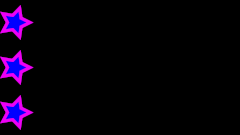
| |
| 0f–24f | 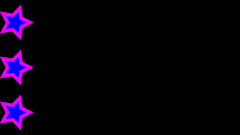
|
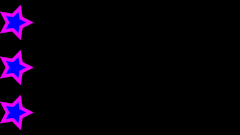
|
| 24f–24f | 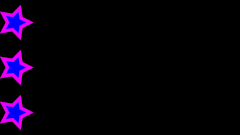
|
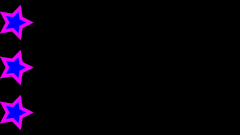
|
| 24f–0f | 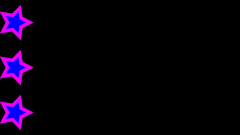
|
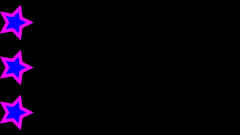
|
- Note
- Rows in table – Apreture value from begin (0 frame) to end (120 frame).
- Columns in table – Subsample Start Amount value and Subsample End Amount value
Synfig file from sample test - Media:motion_blur.sifz
See also
- A short description of the blur layers can be found here: Layer
- Radial Blur Layer with a radial control of the size of the blur.
- Blur Layer mostly used types of blur.
| Language: |
English |